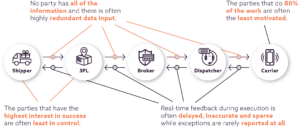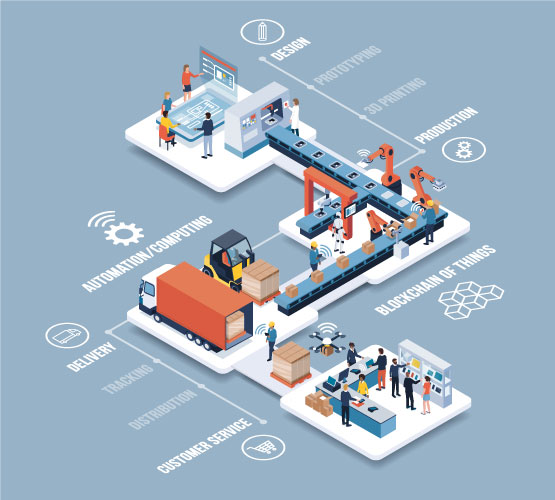Retailers, distributors, and manufacturers were not engineered for the rapid shifts in the demand patterns we all see today. The current pandemic is resulting in urgent efforts to adapt supply chains quickly, whether by revising purchase orders and changing merchandising plans or by reallocating working capital, inventory, or logistic capacity to point them where they are needed most.
Some of these efforts to adapt the supply chain include:
- Revising buy plans toward high-demand categories,
- Paying crucial supplier invoices more quickly,
- Reducing product variety,
- Relaxing same-day or next-day delivery requirements,
- Having suppliers deliver directly to stores instead of warehouses.
Many companies are struggling to respond to the rapid shift in the supply chain because they are ill-prepared to manage through shifting supply and demand data quickly enough. In the process, they lose the currency of data.
Reshaping the supply chain
At a practical level, parties in a supply chain primarily exchange information about orders. Without the currency of data, how do they respond to a sudden surge in demand? Or a sudden decline in supply? Or respond to new requests that did not exist before? To adapt to the supply chain, retailers, distributors, and manufacturers all need to send orders, confirmations, and invoices back and forth reliably, often with new companies they have never done business with before. To maintain data currency across a reshaped supply chain, companies need to exchange data in a more timely and secure fashion. Maintaining the currency of data often requires communication through industry-standard protocols such as EDI, HTTPS, SFTP, or REST API because there isn’t time to develop custom solutions.
The challenge is to do more with less
These obstacles can be even more acute during a pandemic or in the time of economic disruption that follows in its wake. Technical resources that often were scarce before are now stretched to the limit or could be non-existent due to furloughs. As an additional challenge, the technical staff on hand may not be familiar with the ins and outs of EDI, HTTPS, SFTP, or various API’s because they don’t work with them every day. Maintaining the currency of data while reshaping the supply chain requires organizations to focus on the essentials and drop what is not crucial to the task at hand. And they need to do it quickly using limited resources.
For many companies, the solution is to adopt an integration platform like Jitterbit. Integration-as-a-service (iPaaS) is a cloud-based data architecture that connects applications in the cloud, such as NetSuite and Salesforce, with one another and to on-premise applications like SAP as well as other data sources. This hub-and-spoke architecture facilitates the real-time exchange of data and programs across the supply chain by removing much of the underlying complexity of integration. In a pandemic, no one wants to incur the cost and maintenance headache of carefully custom coding data exchange regime into their applications. Plus, there often isn’t enough time to respond to rapid shifts in demand patterns using bespoke solutions.
The Example of Truckl
One company that is using Jitterbit’s Harmony platform to reshape the supply chain is a Dallas, Texas-based startup called Truckl. The company leverages blockchain to accelerate freight movements by reducing errors, exceptions, and miscommunication. Its mobile application for trucking enables operational improvements, fosters carrier compliance, and ensures collaboration throughout the supply chain by financially motivating all parties to be more flexible.
In practice, the transportation industry is extremely fragmented. There are few standards and even fewer common practices. The flaw in the way supply chains have traditionally worked is that every party in a transaction has partial data. By Truckl’s metrics, 1 in 3 truckloads is flawed in some way. The shipment is late, or it never arrives. The order is partially shipped, or the wrong parts are sent. Nobody in the chain has all the data. Truckl uses mobile phone technology to correct these flaws.
Four Key Issues Today:

How the Truckl Mobile App Works
Let’s say you have a manufacturer or a chemical company that ships several hundred transports per day. They are sure to have at the heart of their IT stack SAP, NetSuite, Epicor, or some other ERP system. Using SAP as an example, Truckl takes the shipping order out of SAP using Jitterbit Harmony and then brings the data into the Truck Mobile app.
The app determines which documents can be automatically generated – for example, a bill of lading. It then attaches this documentation to the transaction. The transaction is then forwarded to a third-party logistics company or other operators. The operator can add additional documentation – for example, special handling instructions or standard operating procedures. The operator also attaches these new documents to the transaction and then forwards them by email or mobile phone.
The shipper can invite a broker who asks a dispatcher to request a driver. All the parties registered in Truckl can see the transactions on the same dashboard. The order pushed out of the ERP now flows seamlessly across the supply chain. As it passes from link to link, it has been enriched with every exchange. The driver sees all the documents and all the data on a mobile device and then goes out and drives the load, completes the transaction, and collects the payment. Thus, Truckl is able to quickly adapt the supply chain without losing the currency of data.
So where do we go from here?
For companies that are in Transportation and Logistics, we recommend you to learn more about the digital transformation on our blog, and check out our on-demand webinar.
Fueling Digital Transformation in Transportation and Logistics
Attendees of this on-demand webinar will learn how to:
- How to increase end-to-end visibility into freight data throughout the supply chain in just days, not months
- How to automate and connect your processes across disparate systems on-premise or in the cloud
- How to make information available quickly and securely in any application or mobile device
For companies in the manufacturing industry, we will be having a webinar shortly that directly addresses how manufacturing companies can do more with less. The webinar is free and will include time at the end of the broadcast for questions and answers.
Enable Connected Manufacturing in Days
Wednesday, April 15, 2020
Noon Australian Eastern Standard Time (AEST)
Attendees of this webinar will learn how to:
- Respond to rapid shifts in demand in just days, not months
- Gather insights on how to automate and digitize your processes across multiple systems
- Improve visibility into operations throughout the supply chain
- Make information available less time and more securely in any legacy or cloud application



